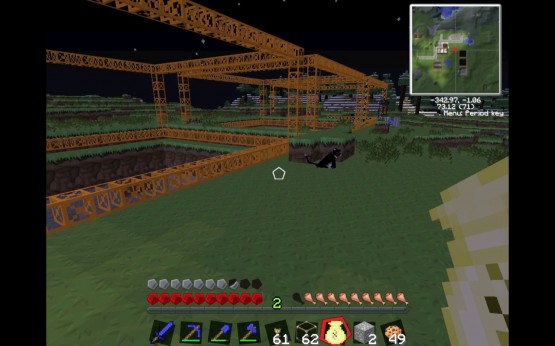
Guest post by Marianne Malmstrom
At the Elisabeth Morrow School, we have been on a journey to help our students develop the essential skills of creativity, collaboration, communication, critical thinking and citizenship. We turned to virtual worlds and MOGs because these are the same skills many young gamers practice through immersive play. Initially, we used these spaces largely for curriculum support work and media literacy but we had no idea how rich these spaces were for core learning too – how far students would go, or how much we would learn ourselves.
While we have worked successfully with a variety of virtual worlds and MOGs, Minecraft (which I described in Part 1), by far, has been one of our favorite platforms because of its flexibility and the enthusiasm it inspires in our students. What has been the most fascinating aspect of working with this game environment is how students themselves have constantly driven the learning and reshaped our program over the last two years. They research mods at home and lobby us at school to incorporate them into our program. One 5th-grade student (aka Snowkit, her screenname) posted on our school’s Minecraft wiki (a discussion forum I set up for my students) her strategy for influencing her teachers to test and adopt a new mod packet that allows players to build machines (see Part 1 for an explanation of “mods”):
July 25th, 2012
Finally, after bugging Knowclue [my screen name in school digital environments] and MrMalm [teacher/project leader] a bunch of times, we finally got Tekkit! Tekkit is a huge mod pack that is multiplayer-supported. So I’ll tell you the steps that made it public for Morrowcraft citizens. 1. Bugged Knowclue till she was jealous [Snowkit asked permission to bring her laptop to school to show us Tekkit. She spent an entire class period commanding my attention and pointing out various cool features until I was sufficiently awed]. 2. Asked MrMalm about ten times. 3. MrMalm made server. 4. Found out It was whitelisted so only MrMalm, Knowclue and I could play. 5. [Third-grade girl] Sugar04 won a bet against MrMalm and got to play. 6. Bugged MrMalm and Knowclue till they let everyone on! –Snowkit
What it looks like when students teach too
Children are teaching themselves and each other what they need to know to maximize game play, as clearly demonstrated in the discussions among students posted on our classes’ Minecraft wiki. They are also using mobile phones, IM, Skype and Twitter to communicate during play and manage their community beyond the game.
I recently received the following tweet (Twitter message) from a 5th-grade boy: “@knowclue Check the Morrowcraft chat from this morning at about 10:40. The issue of gender has come into student servers…”. The problem was minor and quickly resolved by the children, but I was fascinated both by his inclination to alert me that an issue was brewing and by what tool he used to do so. Even more sophisticated than the way they communicate with each other and their teachers is the caliber of the projects the children choose to do on their own. We have 3rd-graders creating their own game servers and 6th-graders developing their own mods (i.e., writing software code for specific outcomes).
What I’m observing demonstrates the need for us to rethink how we design learning spaces in school. If we’re going to prepare our children for success in their world (not ours) we need to let go of our pre-conceived notion of what school looks like. There is a growing disconnect between the content-driven curriculum we spoon-feed children and the vibrant collaborative learning that is happening in their digital play spaces. By becoming partners in learning (and playing) with our students or children in these spaces, we better understand their world – which allows us to make better decisions about what’s relevant in preparing them for success. Our experiences in Minecraft are showing me that students learn a lot more when they are given responsibility both for their own learning and for co-management of their learning environments. This ongoing collaborative learning experience is also teaching me a lot of things about how we adults can support young children working and playing in virtual spaces.
Next: Safety and citizenship in games and virtual worlds (do try this at home!). Part 1 is here.
+ = +
Check out this 4-min. video of 5th-grader Snowkit explaining her quarry machine to Marianne and giving her a tour of some of her other work in Minecraft:

Minecraftsp is such an educational game. Thanks for the info.